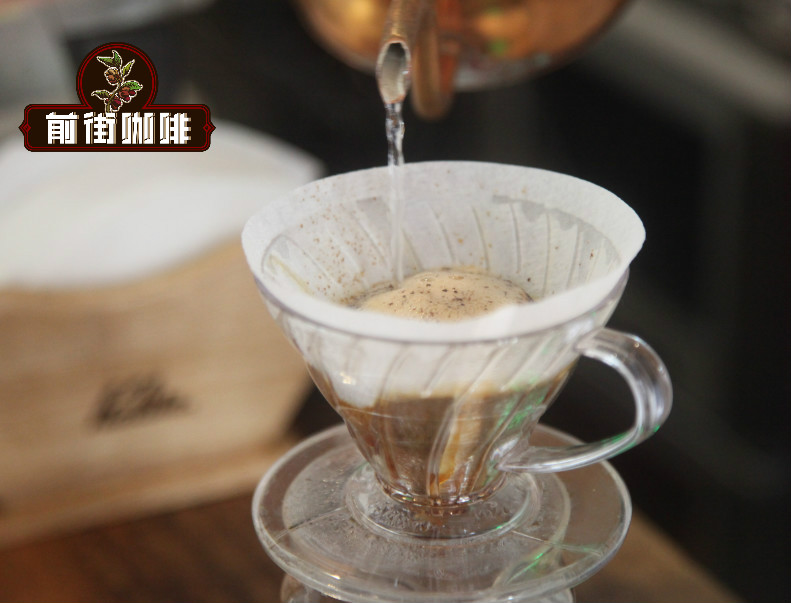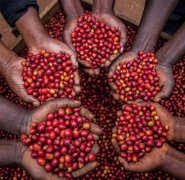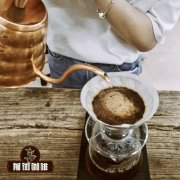Introduction to the Environmental characteristics of Manors in Bolivian Coffee producing areas description of the flavor and taste of Bolivian coffee beans
Geographical Environment and Coffee Manor in Bolivia
Bolivia has tropical climate conditions and high altitude, coffee producing areas concentrated in more than 1400 meters above sea level, can produce a lot of delicious boutique coffee. Most of them grow Typica and Kaddura, and some estates have Java varieties.
Bolivian estates and coffee farmers were often short of resources in the early days and were not easy to manage. Now there are many programs to subsidize local farms and coffee farmers to help them produce high-quality coffee scientifically in order to make better profits to support their lives and even improve their farmland. As a result, we have come up with the name of coffee beans with high quality and clear taste.

Arcangel, Saint Angel Coffee Manor in Bolivia
Caranavi, a well-known Bolivian coffee family, owns seven estates, the best of which is the Holy Angel Manor, which is named because there is an old tree in the garden, which is guarded like an angel.
In order to improve its quality, Saint Angel Manor takes great pains to plant Huang Kadura and Red Kadura separately to trace the resume of each belt of coffee beans. In addition to Kaddura, they also grow Batian, Java, SL28/34 and other coffee varieties.
In this year's coffee performance, the Saint Angel is the manager's favorite, because of the cocoa sun treatment, so that the flavor is more prominent, strong tropical fruit, grape and cider flavor, presented in this cup of coffee, the tail rhyme is more with the general flavor of cocoa, the flavor complexity is high.
II. Bolivian Sugar Factory Coffee Manor Trapiche
Trapiche, Sugar Factory Coffee Manor, is located in Samaiapta, Bolivia. The area is rocky and originally thought it was not suitable for growing coffee beans, but after discussion with many experts and improving the condition of the manor, excellent varieties of coffee beans such as bourbon, Java and geisha were successfully planted. In particular, the 2019 batch of coffee beans has a very fine and elegant flavor.
The story goes back to 2016, when Pedro bought the block for planting and planted many different varieties, including Bourbon, Java, Geisha, SL28/34, Batian and other coffee beans.
2019 is the first harvest of the estate, all the coffee belongs to Baby Plant, but the flavor performance is quite amazing.
Trapiche is a machine used to extract sugar, and the block of Trapiche Manor used to be the place where sugar is produced, so it is called the sugar factory. Now there is an old sucrose extractor at the gate of the manor!
Third, Bolivian Castle relics Manor El Fuerte
The ruins of the castle at high elevations and high latitudes have long-term low temperatures, making coffee fruits take longer to ripen, mainly grown in Red Kaddura, geisha and the rare bourbon species in Bolivia.
Even though there is little need to plant shade trees to lower the ambient temperature of coffee trees, Pedro has planted many sturdy tree species on the estate, mainly to prevent coffee trees from being damaged or affected by strong local winds.
The Castle site Manor, as the first manor of Samayi Pata, has also been selected as the site for the wet treatment plant in the block. All the coffee from the Samayi Pata block will be sent to the Castle site Manor as quickly as possible, so that Pedro can have a better grasp of the production process, improve traceability and ensure a steady improvement in quality.
4. David Mamani, Manni Coffee Manor, Bolivia
The Manmani family has been engaged in coffee cultivation for years, but it has not been able to break through the bottleneck and has not improved much. Later, after losing the help of the United Nations to Bolivian coffee farmers, the whole thing fell to the bottom and completely lost the pillar of planting, so the blind man could only touch the elephant and rely on the impression in his head to maintain the quality of the manor.
Until the sunrise project launched by Agricafe, it not only funded the coffee farm of the Manmani family, but also helped upgrade the technology and equipment, which eventually enabled the Manmani family to grow excellent Kaddura coffee beans of international standard.
Project Chaoyang was initiated by Agricafe, a company owned by Pedro Rodriguez. The main purpose of such a project is to provide local farmers with assistance in growing coffee and to improve the yield and quality of coffee. Such a project has been going on for five years, from working with more than 50 coffee farmers to more than 400 coffee farmers.
The Chaoyang Project allows everyone to work together for higher output and higher quality coffee.
Don Carlos Coffee Manor
Who is Don Carlos? He is a veteran employee of Pedro and an expert in coffee bean handling. Pedro is an important company that has pushed Bolivian coffee beans onto the international stage, and Don Carlos has also contributed.
When Pedro decided to set up its second coffee farm, it decided to grow Geisha, Kaddura and Catuai in a scientific way under the name of Don Carlos, which is unique among many estates because of its high quality and unique style.
Floripondio Mumandra Coffee Manor
The Mumandra Manor and the Castle Heritage Manor are located in the same area, the Samayi Pata area, which is high in altitude but not easy to grow coffee, but they have found suitable microclimate and excellent soil blocks in the area. So Mumandra Manor has become an experimental manor of boutique coffee! The estate grows more than 50 boutique coffee varieties, including Red Kaddura, SL28/SL34, Batian, Pacamara, Java and so on.
It is worth mentioning that there are really a lot of wooden mandala in the manor. It is a neurotoxic plant. In traditional culture, witches will eat its soup to communicate with the gods. The Mudra Manor often reminds visitors not to touch and smell the Mudra.
7. Alasitas wishes Coffee Manor
The Rodriguez family, which started the coffee bean processing plant, aims to increase the production of coffee beans and to use more scientific methods to produce coffee beans. They did make a difference. Miki Suzuki, the winner of the 2017 WBC World Barista Competition, used coffee beans from the Prayer Manor.
Pray that the manor will divide the farmland into three plots and plant geisha (Geisha), Java (Java) and Kaddura (Caturra) respectively from high altitude to low altitude, so that they can take more careful care of different coffee trees. And pray that the manor will never be stingy to share the technology and experience of coffee cultivation with other farmers.
The name of the prayer manor comes from the local festival Alasitas, during which they make miniature versions of all kinds of things in life, such as cars, diplomas, and so on, and offer them to the gods.
8. Alpaca Manor
Grass-mud horses are alpacas originally from South America. Alpaca manor is called alpaca because there are many alpacas there.
Alpaca Manor is an old estate that has been in operation for 15 years before it met Pedro, which is trying to promote Bolivian coffee beans on the international stage. But they also receive tutoring from Pedro, gradually growing different coffee beans separately and in a better way to produce high-quality boutique coffee beans.
Alpaca Manor has a wide variety of coffee beans, including bourbon, geisha, Java, SL28/SL34, Kaddura and so on.
Eagle Coffee Manor in Gavilan Province
Martin, the owner of the provincial eagle manor, grew up in the coffee town of Caranavi, Bolivia, where local coffee farmers stopped growing coffee because they had suffered a decade-long market recession. Martin also gave up, and then decided to start over together after meeting Pedro, taking Bolivian coffee beans to a new level, so he set up the Provincial Eagle Manor.
Important Notice :
前街咖啡 FrontStreet Coffee has moved to new addredd:
FrontStreet Coffee Address: 315,Donghua East Road,GuangZhou
Tel:020 38364473
- Prev

Anaerobic Solar treatment of Coffee beans in Donkey Manor in Panama
How did a great cup of coffee, which is delicious, rich in layers, clear in acidity, full-bodied taste, repeatedly won awards in Best of Panama and broke cup testing records, be created? You may need a very good variety of coffee beans, you may need a piece of land and climate suitable for fine coffee, but more importantly, the person who makes it all beautiful-Lamastus.
- Next

Introduction to the characteristics of Coffee Bean musicians in Carnett Manor, Costa Rica
Most of the boutique coffee is Arabica beans, which like to grow at high altitudes in the tropics, sucking the mineral nutrients of the volcanic soil, and Costa Rica in Central America happens to have such a unique place. Carnet Manor in central Costa Rica uses Kaddura and Kaduai coffee beans for grape honey treatment and washing.
Related
- Beginners will see the "Coffee pull flower" guide!
- What is the difference between ice blog purified milk and ordinary milk coffee?
- Why is the Philippines the largest producer of crops in Liberia?
- For coffee extraction, should the fine powder be retained?
- How does extracted espresso fill pressed powder? How much strength does it take to press the powder?
- How to make jasmine cold extract coffee? Is the jasmine + latte good?
- Will this little toy really make the coffee taste better? How does Lily Drip affect coffee extraction?
- Will the action of slapping the filter cup also affect coffee extraction?
- What's the difference between powder-to-water ratio and powder-to-liquid ratio?
- What is the Ethiopian local species? What does it have to do with Heirloom native species?

